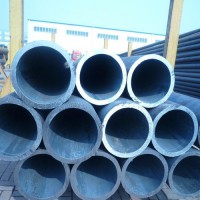Each alloy element in T91 steel plays a role of solid solution strengthening, dispersion strengthening and improving the oxidation resistance and corrosion resistance of the steel. The specific analysis is as follows.
① Carbon is the most obvious element of solid solution strengthening in steel. With the increase of carbon content, the short-term strength of steel increases, while the ductility and toughness decrease. For martensitic steels such as T91, the increase in carbon content will Accelerate the spheroidization and aggregation speed of carbides, accelerate the redistribution of alloying elements, and reduce the weldability, corrosion resistance and oxidation resistance of steel. Therefore, heat-resistant steels generally hope to reduce the carbon content, but the carbon content is too low. The intensity will decrease. Compared with 12Cr1MoV steel, T91 steel has a 20% reduction in carbon content, which is determined by comprehensively considering the influence of the above factors.
②T91 steel contains trace nitrogen, and the role of nitrogen is reflected in two aspects. On the one hand, it plays a role of solid solution strengthening. The solubility of nitrogen in steel at room temperature is very small. During welding heating and post-welding heat treatment of T91 steel in the heat-affected zone after welding, the solid solution and precipitation process of VN will occur successively: during welding heating The austenite structure that has formed in the heat-affected zone increases due to the dissolution of VN, and the degree of supersaturation in the normal temperature structure increases. In the subsequent post-weld heat treatment, fine VN precipitates, which increases the stability of the structure , Improve the lasting strength value of the heat-affected zone. On the other hand, T91 steel also contains a small amount of A1. Nitrogen can form A1N with it. A1N dissolves into the matrix in a large amount above 1 100℃, and re-precipitates at a lower temperature, which can achieve a better dispersion strengthening effect.
③The addition of chromium is mainly to improve the oxidation resistance and corrosion resistance of heat-resistant steel. When the chromium content is less than 5%, it will start to oxidize violently at 600°C, and it has good oxidation resistance when the chromium content reaches 5%. 12Cr1MoV steel has good oxidation resistance below 580°C, with a corrosion depth of 0.05 mm/a, and its performance begins to deteriorate at 600°C, with a corrosion depth of 0.13 mm/a. The chromium content of T91 is increased to about 9%, and the use temperature can reach 650℃. The main measure is to make more chromium dissolved in the matrix.
④Vanadium and niobium are both strong carbide forming elements. After being added, they can form small and stable alloy carbides with carbon, which has a strong dispersion strengthening effect.
⑤The main purpose of adding molybdenum is to improve the thermal strength of steel and play a role of solid solution strengthening.
2.2 Heat treatment process
The final heat treatment of T91 is normalizing + high temperature tempering. The normalizing temperature is 1040℃, the holding time is not less than 10 min, the tempering temperature is 730~780℃, and the holding time is not less than 1h. The final structure after heat treatment is tempering. Fire martensite.
2.3 Mechanical properties
T91 steel's normal temperature tensile strength ≥585 MPa, normal temperature yield strength ≥415 MPa, hardness ≤250 HB, elongation (standard circular specimen with 50 mm gauge length) ≥20%, allowable stress〔]650℃= 30 MPa.
2.4 Welding performance
According to the carbon equivalent formula recommended by the International Welding Society, the carbon equivalent of T91 is calculated as
It can be seen that the weldability of T91 is poor.


















